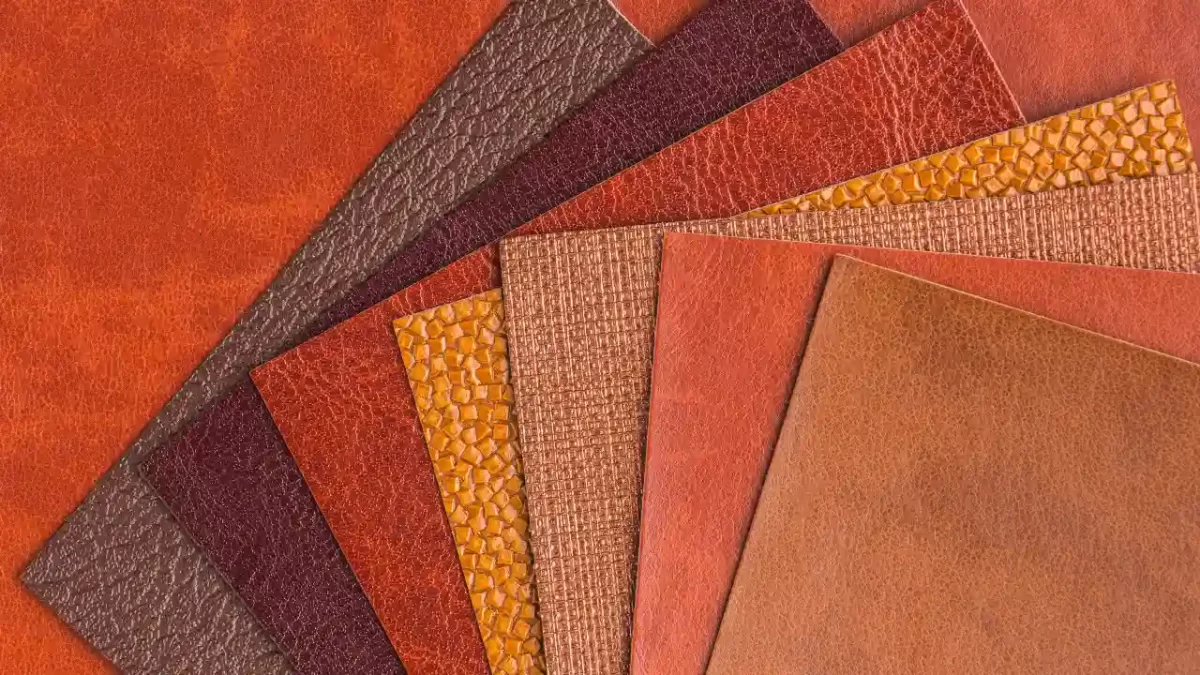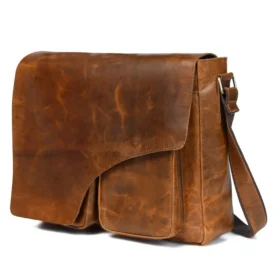🚛 FREE SHIPPING | LIFETIME REPAIR WARRANTY | 20% Sale: “FREEDOM20”

Understanding the difference between faux leather vs PU leather is essential for making informed purchasing decisions, especially when it comes to leather bags. While both materials offer an animal-free alternative to genuine leather, they each have unique characteristics that set them apart. In this guide, we’ll delve into the difference between faux leather and PU leather, highlighting their properties, uses, and benefits. By the end, you’ll have a clear understanding of PU vs faux leather, helping you choose the right material for your needs.
When comparing PU material vs faux leather, it’s important to note that both are synthetic alternatives to genuine leather. PU leather, or polyurethane leather, is made by coating a fabric base, such as cotton or polyester, with a layer of polyurethane. This process gives PU leather its characteristic durability and versatility. On the other hand, faux leather is a broader term that encompasses various synthetic leathers, including PU leather and other materials like PVC (polyvinyl chloride).
Composition: The difference between faux leather and PU leather often lies in their composition. PU leather is specifically made using polyurethane, whereas faux leather can be made from various synthetic substances.
Appearance: While both materials can mimic the look and feel of genuine leather, PU leather typically has a smoother finish and can be more flexible.
Durability: PU leather tends to be more durable than some other types of faux leather, making it a popular choice for high-wear items like leather bags.
Cost: Generally, PU leather can be more affordable than other types of faux leather, providing a budget-friendly option without compromising on quality.
By understanding these differences, you can better appreciate the various leather types available in the market and make a more informed decision when purchasing leather products. Whether you’re looking for stylish leather bag or other accessories, knowing the nuances between PU vs faux leather will help you choose the best material for your needs.
Faux leather is a synthetic material designed to mimic the look and feel of genuine leather. Made from a variety of plastic-based materials, faux leather is a popular choice for those seeking a cruelty-free and budget-friendly alternative to real leather. The key difference between faux leather and PU leather is that faux leather can be made from various materials, including polyurethane (PU) and polyvinyl chloride (PVC). Real vs fake leather debates often highlight that faux leather is not as durable as genuine leather, but advancements in manufacturing have significantly improved its quality and appearance. Faux leather is widely used in furniture, clothing, and accessories, providing a versatile and ethical option for consumers.
PU leather, or polyurethane leather, is a type of synthetic leather made by coating a fabric base with a layer of polyurethane. This process creates a material that closely resembles genuine leather in texture and appearance while offering greater durability and flexibility. When comparing PU material vs faux leather, it is important to note that PU leather is a specific type of faux leather, making the term PU vs faux leather somewhat redundant. PU leather is commonly used in a variety of products, including shoes, jackets, and bags. Understanding how to clean leather bags made from PU leather is crucial, as it requires specific care to maintain its appearance and longevity.
By understanding the distinctions between these materials, you can make more informed choices and properly care for your leather products, ensuring they look their best for years to come.
Understanding the difference between faux leather and PU leather is essential for making informed decisions when purchasing leather alternatives. Faux leather is a broad term that encompasses various synthetic materials designed to mimic the look and feel of genuine leather. PU leather, a specific type of faux leather, is made by coating a fabric base with polyurethane, giving it a smoother finish and greater flexibility. In contrast, other types of faux leather, such as PVC leather, use different manufacturing processes and materials, resulting in varying levels of durability and appearance. When comparing PU vs faux leather, it’s important to consider the specific properties and intended use of each material.

When considering the durability of faux leather vs PU leather, it’s important to recognize the differences in their construction and intended use. PU leather tends to be more durable than other types of faux leather due to its robust polyurethane coating, making it an excellent choice for items that undergo frequent use, such as a women’s leather duffle bag or a leather sling bag for men’s. On the other hand, some forms of faux leather may not withstand wear and tear as effectively. Therefore, understanding the specific needs and usage of the product is crucial when choosing between these materials.
When it comes to affordability, comparing PU vs faux leather reveals that PU leather often provides a cost-effective alternative to genuine leather without compromising much on quality. While both materials are generally more affordable than real leather, PU leather typically offers better value for money, especially for fashion items like leather sling bags for ladies. Faux leather, encompassing various materials, can range in price but generally remains accessible for budget-conscious consumers. This makes both PU and faux leather popular choices for stylish and economical leather alternatives.
Understanding the composition of faux leather vs PU leather is key to appreciating their differences. Faux leather is a general term that includes various synthetic leathers, such as PU and PVC. PU leather, specifically, is created by coating a fabric base with polyurethane, resulting in a material that closely mimics the look and feel of genuine leather. This makes PU leather a preferred choice for high-quality items like a women’s leather duffle bag or a leather sling bag for men’s. In contrast, other types of faux leather might use different base materials and coatings, leading to variations in texture, durability, and appearance.




When considering usage for PU vs faux leather, it’s important to note the versatility and applications of each material. PU leather is widely favored for products requiring durability and flexibility, such as leather messenger bags for women and brown leather briefcases. Its robust nature makes it suitable for daily use and high-wear items. Faux leather, encompassing various synthetic materials, also finds use in fashion and furniture but may not offer the same level of durability as PU leather. Understanding the specific needs of your item will help determine the best material choice.
Proper maintenance and care are crucial for extending the life of both faux leather vs PU leather products. PU leather generally requires less maintenance and is easier to clean with just a damp cloth, making it ideal for items like a vintage messenger bag. On the other hand, faux leather can vary in its care requirements depending on the specific materials used. Regular cleaning and avoiding harsh chemicals are key to maintaining the appearance and longevity of both types. Following these guidelines will ensure your leather alternatives remain in excellent condition.
The environmental impact of PU material vs faux leather is an important consideration for eco-conscious consumers. PU leather is made from polyurethane, which is less harmful than other synthetic materials like PVC. However, both PU and faux leather are not biodegradable, posing environmental concerns. Advances in eco-friendly production methods are emerging, but it’s essential to be aware of the environmental footprint of these materials. When choosing between PU vs faux leather, considering their environmental impact can guide more sustainable purchasing decisions.
When choosing between faux leather vs PU leather, it’s essential to weigh their pros and cons. Both materials offer unique advantages and disadvantages that affect their suitability for various applications, from fashion accessories to furniture. Understanding the difference between faux leather and PU leather can help you make a more informed decision.
One of the main benefits of faux leather is its affordability. It is generally less expensive than genuine leather, making it accessible for a wide range of consumers. Additionally, faux leather is available in numerous colors and textures, providing design flexibility for various products. Being a cruelty-free alternative, it appeals to those who are concerned about animal welfare. When considering pu material vs faux leather, faux leather stands out for its ethical and economical advantages.
Despite its benefits, faux leather does have some drawbacks. It is typically less durable than genuine leather, which can lead to peeling and cracking over time, especially with heavy use. Faux leather also lacks the breathability of natural leather, which can result in discomfort in certain applications. Furthermore, the production of some faux leather materials, particularly those made with PVC, can have significant environmental impacts. These factors are important to consider when evaluating the difference between faux leather and PU leather.
PU leather is praised for its durability and realistic appearance. It closely mimics the look and feel of genuine leather, making it a popular choice for high-quality items. PU leather is also easier to clean and maintain, requiring minimal effort to keep it looking new. Additionally, it provides a cruelty-free alternative without compromising on luxury. When comparing pu vs faux leather, PU leather often excels in terms of longevity and aesthetics.
While PU leather has many advantages, it also has its downsides. Over time, PU leather can degrade, especially in extreme temperatures or humidity. It is not biodegradable, contributing to environmental concerns. PU leather may not develop the unique patina that genuine leather acquires over time, which some people find appealing. These drawbacks should be considered when deciding between faux leather vs PU leather to ensure you choose the best material for your needs.
When it comes to choosing between faux leather vs PU leather, understanding the distinctions is key. Faux leather is a broad term that includes various synthetic materials designed to mimic real leather. PU leather, a type of faux leather, specifically uses a polyurethane coating over a base fabric, giving it a more authentic leather appearance. The difference between faux leather and PU leather lies in their composition and texture. PU material vs faux leather often shows that PU leather tends to be more durable and flexible, making it a popular choice for items that require resilience and longevity. Recognizing these differences can help you make an informed decision about which material suits your needs best.
Deciding which is better, faux leather vs PU leather, depends on your specific requirements and preferences. PU leather offers a closer resemblance to genuine leather, both in look and feel, and is known for its durability. It’s ideal for high-wear items due to its sturdy nature. In contrast, faux leather encompasses a wider range of materials, some of which may not be as durable but are often more affordable and available in diverse styles. When comparing pu vs faux leather, consider the intended use, budget, and desired aesthetic. Understanding the difference between faux leather and PU leather ensures that you select the material that best aligns with your needs and values.
When comparing faux leather vs PU leather, it’s clear that each material offers unique benefits suited to different needs. Faux leather is a broad term encompassing various synthetic options, including PU leather. The primary difference between faux leather and PU leather lies in their composition and durability. PU leather, with its polyurethane coating, mimics real leather more closely and offers enhanced durability, making it ideal for high-use items. On the other hand, other types of faux leather might be more affordable and available in a wider range of styles. Ultimately, choosing between PU material vs faux leather depends on your specific requirements, budget, and preference for durability or aesthetic flexibility.
FAQ
When comparing the durability of PU leather and faux leather, PU leather tends to last longer. This is because PU leather is a type of synthetic leather made from polyurethane, which is more resistant to wear and tear. On the other hand, faux leather, often made from a combination of plastic and fabric, may show signs of wear faster, especially if subjected to frequent use.
Generally, faux leather is more affordable than PU leather. This is because faux leather can be produced using cheaper materials and simpler manufacturing processes. While PU leather also remains a cost-effective alternative to genuine leather, its production involves additional steps to achieve its characteristic durability and texture, making it slightly more expensive than standard faux leather.
The main difference between PU leather and faux leather lies in their composition and production process. PU leather, or polyurethane leather, is made by applying a coating of polyurethane to a base material, typically split leather or fabric. Faux leather, on the other hand, is a broader category that includes materials like PU leather but also encompasses other synthetic options made from different polymers and textiles. Thus, PU vs faux leather often comes down to specific types within the faux leather family.
Luxury brands tend to prefer PU leather over standard faux leather due to its superior quality and durability. PU leather offers a more realistic leather-like appearance and feel, which aligns with the premium image that luxury brands aim to maintain. However, some luxury brands also use high-quality faux leather variants for specific products, emphasizing sustainability and innovation in materials.


